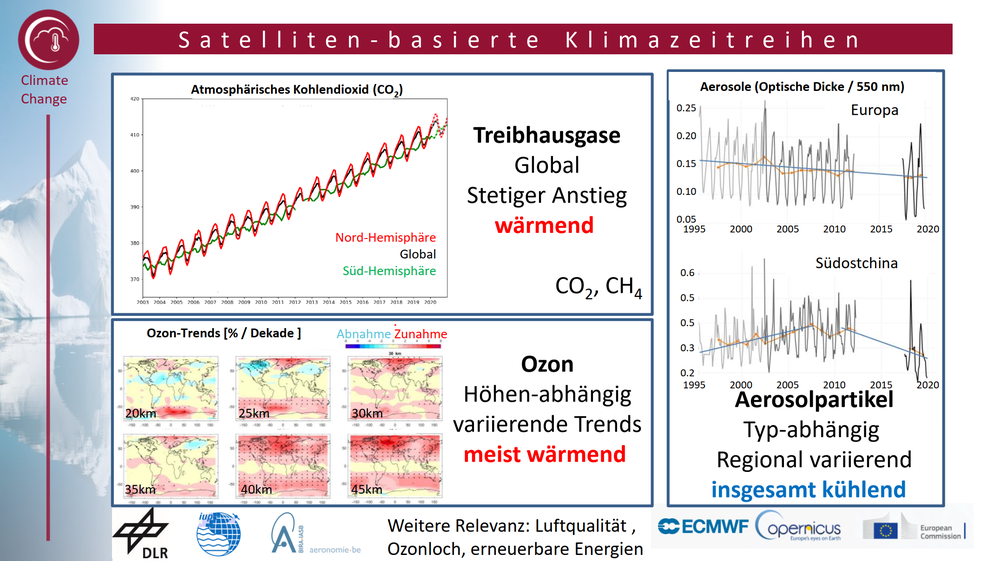Copernicus Climate Change Service (C3S) re-commissions EOC

An EOC-led consortium of 15 European partners was commissioned by the Copernicus Climate Change Service to generate for two-and-a-half more years time series of data on atmospheric ozone, aerosol particles and the greenhouse gases carbon dioxide and methane. This satellite-collected data allows systematic, global monitoring as well as regional comparisons.
The consortium has already been producing these data products for the European Copernicus service for just under three years. The raw data come from a variety of complementary satellite sensors. From this data the required information is then derived, processed, and quality-checked. Time series for various parameters showing atmospheric composition are then assembled. Since they are mutually consistent they are optimally suited to analysing climate change.
The atmospheric concentration of the greenhouse gases carbon dioxide and methane has continuously increased since the beginning of industrialisation and is driving global warming. From 2019 to 2020 alone, the CO2 content of the atmosphere increased by some 16 gigatonnes, which is equivalent to an additional warming (without feedback effects) of about 0.01 degree Celsius. Atmospheric ozone causes additional warming. Various types of aerosol particles, by contrast, together cool the climate and partially conceal the true extent of the greenhouse effect. However, quantitative analyses of the climate effects of aerosols (especially as condensation nuclei during cloud formation) still contain significant uncertainties.
Especially climate models can be verified and improved with these data. With the help of the Copernicus data products, the net warming and cooling effects on Earth’s radiation balance can be better understood, sources and sinks of trace substances quantified, and trends monitored. Last but not least, this contributes to better climate forecasts for the next IPCC report.

